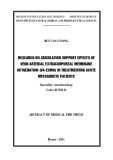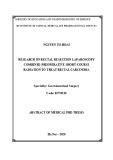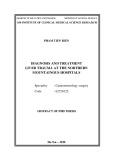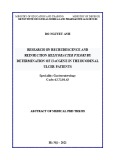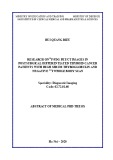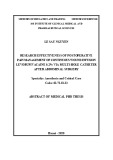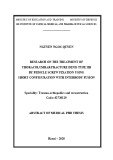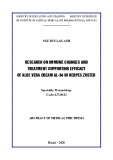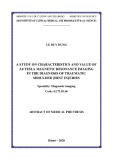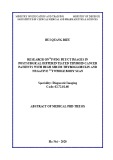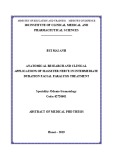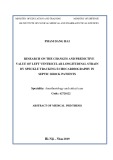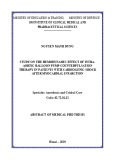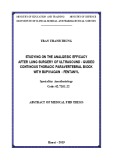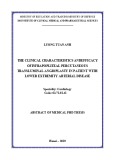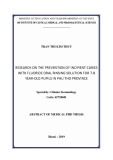
3
1.3.3. Patient Control Analgesia (PCA)
1.3.4.Drug-free technique
1.4. Thoracic paravertebral block
1.4.1. Brief history
1.4.2. Anatomy of the thoracic paravertebral space
The thoracic paravertebral space is a wedge-shaped space that
lies on either side of the vertebral column. It is wider on the left than on
the right and ílimited by:
- Front wall: The parietal pleura forms.
- Posterior wall: The superior costotransverse ligament, which
extends from the lower border of the transverse process above to the
upper border of the transverse process below. This ligament connects
with intercostal membrane in the outer.
- Inner wall: the back side of the vertebral body, spinal disc and
split holes between the vertebrae.
1.4.3. Drugs used in the research
1.4.3.1. Bupivacain: There are many drugs used in the
paravertebral block but bupivacain is the most used. It is often combined
with epinephrin to detect mistaken injection into the blood vessels,
reduce circulatory
absorption, decrease peak plasma concentrations and
prolong analgesia.
1.4.3.2. Fentanyl: Used in the paravertebral block. The volume of
fentanyl concentration when combined with anesthesia is 1 to 2 µg/ml.
1.4.3.3. The spread of anesth esia in
the thoracic paravertebral space
Thoracic paravertebral block takes effect at the corresponding
segments marrow, or it may spread to the contiguous levels above and
below, causing motor, sensory and sympathetic blockade on one side,
including primary roots that dominate the abdominal segment of the
abdomen. Eason and Wyatt found that at least four intercostal spaces
could be covered by a single 15-ml injection of 0.375% bupivacain.






